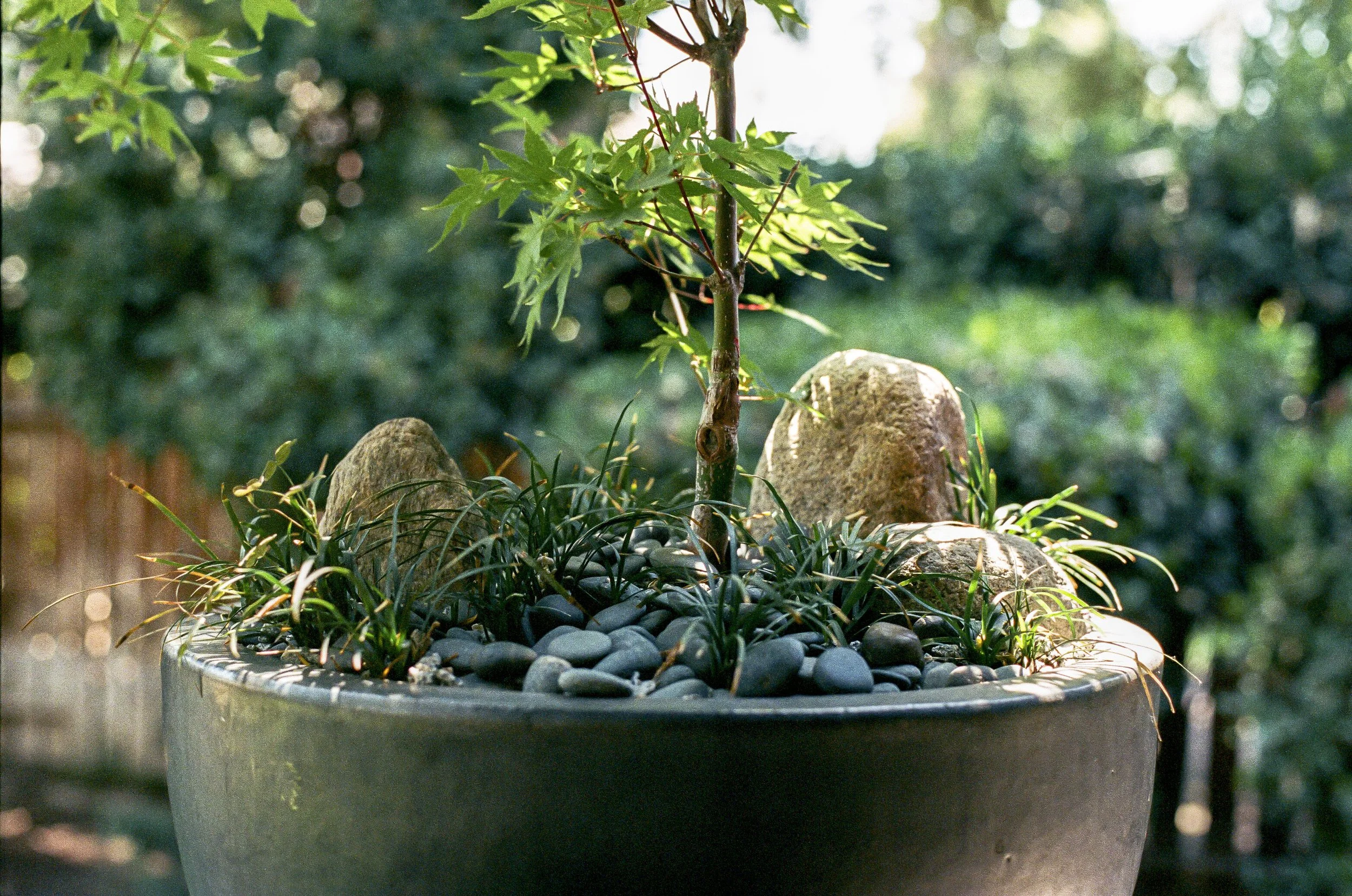There’s an array of innovative landscape design concepts which can be tailored to your unique tastes.
Design solutions range from the artful integration of rain gardens and swales for water conservation to the allure of thriving vegetable gardens and indigenous flora that not only conserve water but also bring year-round vibrancy to your outdoor spaces. With my expertise, you can effortlessly optimize water usage, welcome local wildlife, and establish an eco-friendly garden that thrives within our regional climate.
Explore these thoughtfully curated options below, and let me guide you in implementing the perfect approach for transforming your outdoor space into a sustainable sanctuary.
sustainable design solutions:
-

Rain gardens
Think of rain gardens as “percolation stations”, helping slow and sink the precious rainfall into a depressed area somewhere in your site. Because of its lower grade, rain gardens need special vegetation that can tolerate periodic inundation. This also makes them unique zones in our landscapes with their own micro-climate and specialized plant material.
-

LAWN REPLACEMENT
Should you remove your lawn entirely or reduce it? Let me help you decide with a lawn removal consultation. I can help you estimate and apply for lawn removal rebates and others available through the Western Municipal Water District.
-

Dry Creeks / swales
Eliminate water runoff by spreading, slowing and sinking it back into our soils and water table. A simple but beautiful design solution for your landscape could be a swale or dry creek. I can help determine the perfect size, location, as well as choose appropriate hardscape and plant materials for your swale.
-

pollinator gardens
Our great state has a glorious repertoire of flowering specimens that coevolved with our native bees and butterflies. Carefully chosen plant material and placement can turn any garden into a year-round pollinator haven.
-

vegetable gardens
Wether you’re planting in the ground, or would like vegetable beds, the first step is analyzing your site, creating goals (specifically as they relate to maintenance and irrigation) and drawing up a design response to your site’s specific parameters. Growing your own food is often the most intimate relationship you can have with nature, as you will be working with (and depending on) its seasons and challenges in order to benefit from a self-sustaining lifestyle.
-
container gardens
No matter the space, using planted containers is a great method of adding structural interest, ornamental diversity, and wonderful focal points along the garden. They allow us to grow and enjoy specimens from all over the world because we get to dictate the soil type, climatic conditions and water use. Never underestimate the power of a well curated group of container plants for a lasting visual impact in your landscape.


